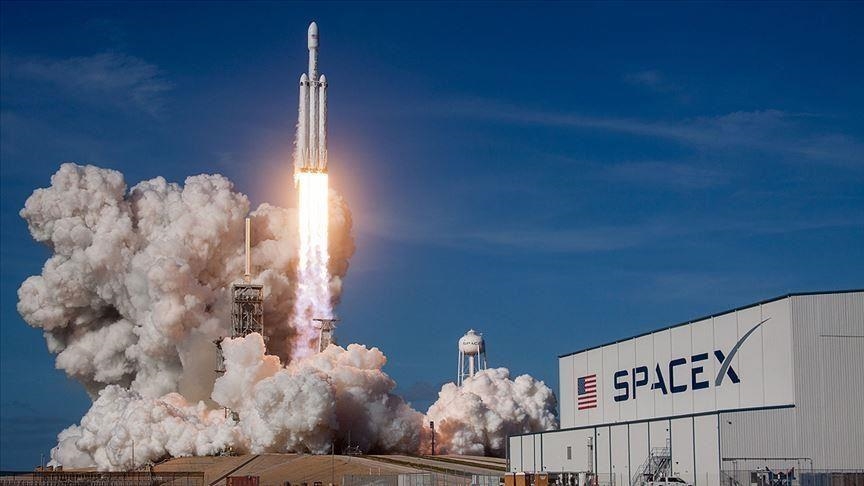1,000 Iranians Rescued, Aid Flying In
Those rescued were located thanks to the sniffer dogs and hi-tech ultrasound equipment of both Iranian and foreign emergency teams, reported Agence France-Presse (AFP).
In the first official indication of the progress of the rescue operation, the state-run Iran News Agency (IRNA) announced earlier that only 200 had been rescued on Saturday, December 27.
Between 20,000 to 40,000 people had been killed in the killer 6.3-magnitude tremor which struck before dawn Friday, December 26, and leveled 70 per cent of the mud-brick buildings and sites in the historical city.
Rescue workers from 21 different countries are working alongside Iranians in an uphill effort to find survivors.
Iran’s Interior Minister Abdolvahed Mussavi Lari said Sunday that the bodies of 15,000 people have already been buried.
"Unfortunately the number of dead now tops 20,000 and about 15,000 bodies have already been buried," he said, without giving indication of the number of injured.
Earlier in the day, the state radio said that a total of 13,000 people have so far been confirmed dead in the killer earthquake.
Of these, 2,000 died of their injuries in hospitals around the region, according to the broadcast.
End Of Search
Meanwhile, the U.N. Office for the Coordination of Humanitarian Affairs (OCHA) expected the search for survivors to end Sunday, with attention turning to the recovery of bodies and aid for the homeless.
"It is anticipated that the search and rescue operations will be over today," a statement from OCHA said.
At a meeting Sunday morning in Bam between U.N. representative Jesper Lund and Iranian officials, "there was consensus that no international search and rescue teams are required any longer," the statement said.
"There is an acceptance that we are coming out of the rescue phase and moving now into, unfortunately, the body recovery phase and then on to the longer phase of reconstruction," said Ted Pearn, the U.N. coordinator on site in Bam.
He said that while the search for survivors continued, international aid workers were focusing on "other factors that are becoming extremely important and that is making certain that all the injured are cared for and then we have sufficient shelter, food and water and particularly warm clothing because temperatures drop considerably".
The U.N. team arrived early Sunday to find that many residents were sleeping outside as many of the buildings were in danger of collapsing.
Aid Planes Arrive
Additionally, aid planes from all over the world landed in Kerman, southeast Iran, to help in the aftermath of the shattering quake.
The first U.S. plane bringing aid workers and medical material for rescue operations, a giant Hercules C-130, arrived at 3 a.m. Sunday in Kerman, IRNA said.
As soon as news broke early Friday of the quake, U.S. President George W. Bush had sent his condolences to the Iranian people and announced aid to the victims.
Shortly afterwards an Iranian official announced that his country would accept aid from all countries except Israel, which Iran does not recognize.
Planeloads of aid for the victims from the United Arab Emirates (U.A.E) and Saudi Arabia are also due in Kerman later in on Sunday.
Riyadh dispatched Saturday night three aircraft carrying food, medicines, tents and blankets as well as a medical team in a continuing effort ordered by King Fahd and Crown Prince Abdullah bin Abdul Aziz.
The U.A.E, which has a dispute with Iran over three strategic Gulf islands controlled by Tehran, was launching aid flights on Sunday under the authority of President Sheikh Zayed bin Sultan al-Nahayan.
A U.A.E Red Crescent Society team has already flown out Sunday morning on the first emergency flight with relief supplies.
In Dubai, Crown Prince and U.A.E Defense Minister Sheikh Mohammad bin Rashid al-Maktoum issued instructions to the charity bearing his name to start aid flights to Kerman too, officials said.
The first plane left Dubai on Sunday morning loaded with 100 tones of goods.
Qatar announced it would be sending aid to Iran while in Bahrain’s King Hamad bin Issa al-Khalifa gave the green light to help the stricken neighbor.
A Kuwaiti medical team, led by the head of the Medical Emergency Department and comprising a number of specialist doctors, was to leave for Iran on Sunday, the health ministry said.
Egypt has dispatched Sunday two chartered military planes loaded with 10.5 tones of aid, including medicines, medical equipment and tents, for the victims of the quake.
The Indonesian government also said Sunday it will provide assistance, in the form of drugs and other equipment and medical personnel.
The International Committee of the Red Cross (ICRC) announced Sunday it had 35 tones of medical supplies, tents, blankets and bedding loaded in Jordan and ready to fly to southeastern Iran for the survivors.
ICRC spokesman Roland Sidler said an Ilyushin aircraft chartered from Iran’s national flag carrier, Iran Air, would start shuttling between the Jordanian capital, Amman, and the devastated city of Bam on Monday, December 29.
He added that five trucks had already made the 1,000-kilometre (625-mile) journey to Bam from an ICRC depot in the Gulf port of Khormanshah and that another 15 trucks were expected to follow soon.


